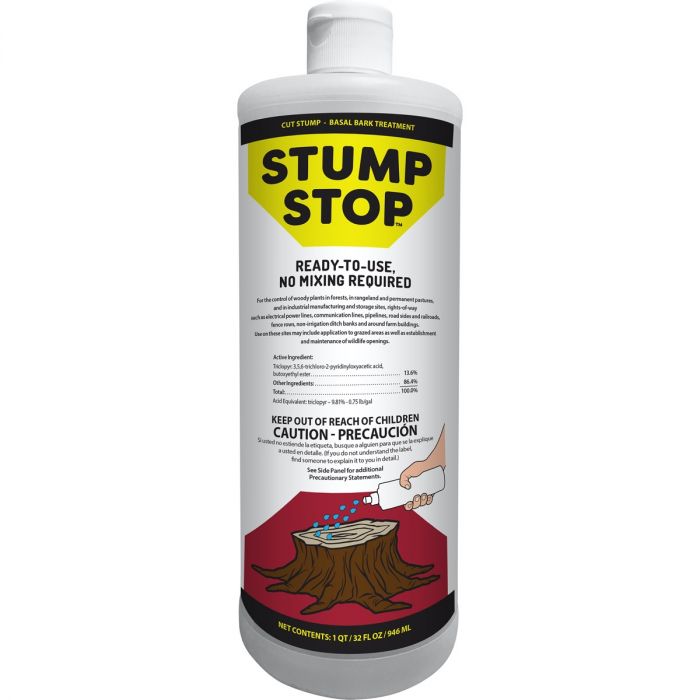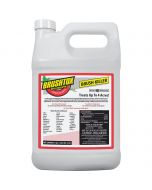Cut Stump and Basal Bark Treatment
No mixing required.
Stump Stop is a ready-to-use herbicide for cut stump or basal bark treatment. This powerful solution controls nearly 100 varieties of woody plants species including alder, birch, dogwood, elm, hawthorne, locust, Russian olive, pine, sumac, willow and many more. This product also kills poison ivy and poison oak. For a complete listing, see the label.
Where to use:
Apply nearly anywhere woody plant species grow, including:
| Forests | Rangeland | Permanent pastures | Industrial manufacturing |
| Storage sites | Rights-of-way | Electrical power lines | Communication lines |
| Pipelines | Road sides | Railroads | Fence rows |
| Non-irrigation ditch banks | Around farm buildings | Grazed areas | Wildlife openings |
When to use:
Cut Stump Application
Treatments may be applied throughout the year, except when snow or water prevent spraying to the ground line. Control may be reduced with treatment during periods of moisture stress as in late summer.
Basal Bark Treatment
Apply at any time, including the winter months, except when snow or water prevent spraying to the ground line.
How to use:
Cut Stump Application
To control resprouting, apply undiluted Stump Stop to wet the area adjacent to the cambium and bark around the entire circumference and the sides of cut stumps. Sides of stumps should be thoroughly wetted down to the root collar area, but not to the point of runoff.
Basal Bark Treatment
To control susceptible woody plants with stems less than 6 inches in basal diameter. Apply Stump Stop with a backpack or knapsack sprayer using low pressure and a solid cone or flat fan nozzle. Spray the basal parts of brush and tree trunks in a manner which thoroughly wets the lower 12 to 15 inches of stems, including the root collar area, but not to the point of runoff. Herbicide concentration should vary with size and susceptibility of species treated.
Precautions:
- Always wear personal protective equipment when using Stump Stop including wearing a long-sleeved shirt and long pants; using chemical-resistant gloves such as Barrier Laminate, Nitrile Rubber, Neoprene Rubber, or Viton; and always wearing shoes and socks.
- After using this Ready-To-Use mixture, wash your hands thoroughly before eating, drinking, chewing gum, using tobacco or using the toilet.
- Remove all personal protective equipment, wash thoroughly according to manufacturers’ directions and change into clean clothing.
- Don’t apply Stump Stop to vegetable crops, grapes, tobacco, cotton or desirable flowers or broadleaf plants.
Active Ingredients:
| Triclopyr: 3,5,6-trichloro-2-pyridinyloxyacetic acid, butoxyethylester | 13.6% |
| Other Ingredients | 86.4% |
| Total | 100.0% |
Product Label:
Disclaimer:
It is a violation of Federal law to use this product in a manner inconsistent with its labeling. Read the entire label before each use. Use only according to label instructions.
See the complete label for specific use rates and detailed instructions.
Consult the Safety Data Sheet (SDS) for important safety information.


